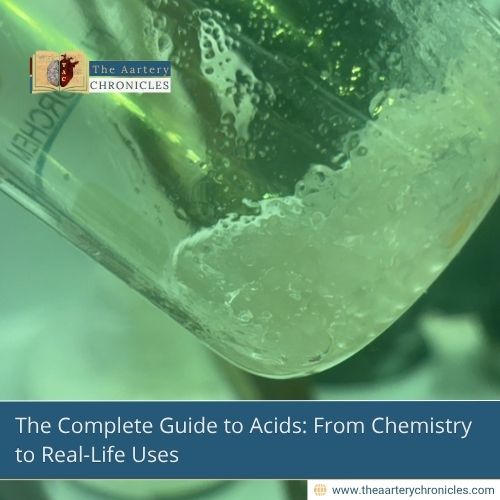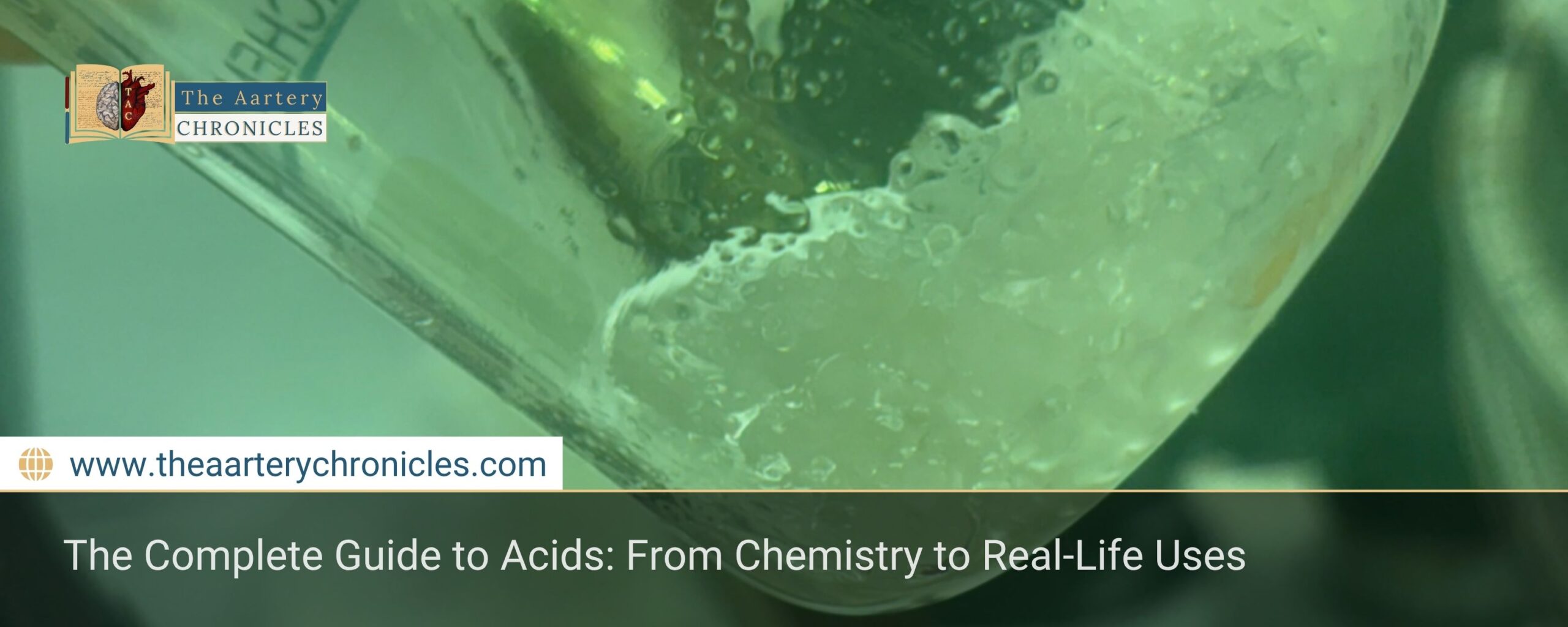

Premonitory Dreams: Myth or Reality? Here's What You Need to Know
Introduction
Acids are essential chemical compounds that we encounter every day, even though we often don’t realize they’re there. From sodas to cleaning products to biological processes in our bodies, these compounds play a key role in many areas. In this article, we’ll explore what they are, how they work, and their main applications.
What Are Acids?
Another way to define these compounds is through the Brønsted-Lowry theory, which considers them proton donors (H⁺). This means that in a chemical reaction, an acid “donates” protons to another substance, called a base. The modern definition also includes the ability of acids to accept electron pairs, according to Lewis theory.
Property
Acids have some characteristic properties that make them easily recognizable. One of the most well-known properties is their sour taste, which we can experience in lemons and vinegar, both of which contain organic acids (citric and acetic respectively). However, not all of them are safe to ingest; many are highly corrosive and can cause serious damage to the skin or mucous membranes.
In addition, these compounds react with metals to produce hydrogen gas and with bases to form salts and water, in a reaction called neutralization. This ability to react with bases is the basis of many industrial chemical processes. Another interesting property is their ability to change the color of indicators: for example, the litmus indicator turns red in the presence of an acid.
Types And Classification
Acids can be classified into two broad categories: organic and inorganic. Organic acids, such as lactic acid and citric acid, contain carbon atoms and are commonly found in living organisms. They are typically weak, meaning they do not release all of their protons in solution. Inorganic acids, such as sulfuric acid (H₂SO₄) or hydrochloric acid (HCl), do not contain carbon and are often much stronger and more corrosive.
Another classification is based on their strength. As already mentioned, strong acids release hydrogen ions completely into solution, while weak acids do so only partially. This distinction is important, as it affects the practical use of these compounds in various fields, from industrial chemistry to medicine.
Acids In Everyday Life
Any of the acids we encounter every day are natural or found in commonly used products. Acetic acid, for example, is the main component of vinegar, a common culinary condiment. Citric acid is found in fruits such as lemons and oranges, and is often used as a natural preservative in food products.
Hydrochloric acid, one of the most widely used inorganic acids, is also naturally produced in our stomach, where it plays an essential role in digesting food. However, it is also used in industry for cleaning metals and producing chemical compounds
Industrial Applications
Acids are widely used in a variety of industries. Sulfuric acid is probably the most important in industry, used in the production of fertilizers, detergents, and batteries. It is so essential that its production is often considered an indicator of the state of a country’s economy.
Nitric acid (HNO₃) is an inorganic and very important acid, mainly used in the production of fertilizers and explosives. Organic acids, such as acetic acid, are used in the production of plastics, adhesives and food additives.
Nitric acid (HNO₃) is an inorganic and very important acid, mainly used in the production of fertilizers and explosives. Organic acids, such as acetic acid, are used in the production of plastics, adhesives and food additives.
The Safety
While many acids are harmless when handled with care, some can be extremely dangerous. Strong acids, such as sulfuric and nitric, are highly corrosive and can cause severe chemical burns if they come into contact with the skin. Additionally, their misuse can cause environmental damage, especially if they are disposed of incorrectly.
For this reason, when handling these compounds in industrial or domestic settings, it is important to always wear protective equipment, such as gloves and glasses. In case of contact with the skin, it is essential to immediately wash the area with plenty of water and consult a doctor.
The Future Of Acids In Green Chemistry
Growing concern for the environment has led to the development of “green chemistry,” an approach that aims to reduce the environmental impact of chemical processes. In this context, scientists are working to find safer and more sustainable ways to use acids in industrial processes.
An example is the use of compounds derived from biomass or renewable materials, which could replace those obtained from fossil sources. In addition, methods are being developed to recycle and reuse industrial acids, reducing the amount of chemical waste produced and improving the energy efficiency of processes.
Conclusion
Acids are fundamental in chemistry and everyday life, with applications ranging from cooking to industry. Understanding how they work and what their properties are helps us not only to use them safely, but also to recognize their potential in technological and environmental innovation.









